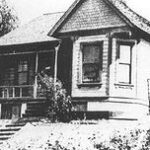Nestled between Trenton, New Jersey, and Morrisville, Pennsylvania, the Calhoun Street Bridge stands as a testament to enduring engineering and rich history. This remarkable structure, officially known as the Calhoun Street Bridge, holds the distinguished title of being the oldest roadway bridge in continuous service connecting Pennsylvania and New Jersey. For over a century, the Calhoun Street Bridge has not only facilitated travel but has also played a pivotal role in the development of the surrounding region.
A Bridge Through Time: The Calhoun Street Story
Frank G. McCartney, executive director of the Delaware River Joint Toll Bridge Commission, aptly stated on the bridge’s 125th anniversary, “The Calhoun Street Bridge is the oldest roadway structure in continuous use between Pennsylvania and New Jersey and it played a significant role in the history of Trenton, Morrisville, and the surrounding region.” His words underscore the bridge’s deep-rooted significance. Opened to traffic in the late 19th century, the Calhoun Street Bridge has witnessed countless changes, adapting and enduring through it all. While demanding regular upkeep and occasional extensive renovations, its fundamental structure has impressively stood the test of time.
A major rehabilitation project, slated for commencement around 2010, highlights the ongoing commitment to preserving this historic landmark. This ambitious undertaking planned to address various aspects of the bridge, including replacing the superstructure’s floor system, repairing the intricate iron truss framework, applying protective layers of paint to the superstructure, mending the substructure and approach roadways, and enhancing safety features for both pedestrians and vehicles with improved bridge rails and sidewalks. These proactive measures are crucial to ensure the Calhoun Street Bridge continues its legacy of service for generations to come.
Part of the Lincoln Highway Legacy
The historical importance of the Calhoun Street Bridge extends beyond its local significance. It was originally a vital segment of the legendary Lincoln Highway, America’s first transcontinental highway. Conceived in 1912 and officially inaugurated on October 31, 1913, the Lincoln Highway was a pioneering endeavor, linking New York City to San Francisco across a staggering 3,389 miles. Intriguingly, this ambitious project also served as the nation’s first memorial to President Abraham Lincoln, predating even the iconic Lincoln Memorial in Washington, D.C. The Calhoun Street Bridge proudly formed part of this historic route until 1920, when the Lincoln Highway’s path was rerouted to a non-toll bridge.
Echoes of this prestigious past still linger on the Calhoun Street Bridge. On its downstream side, near the Pennsylvania abutment, a weathered blue and yellow sign serves as a tangible reminder of its Lincoln Highway connection. This iron sign, featuring the Lincoln Highway emblem and directional arrows pointing towards New Jersey, Pennsylvania, New York, and San Francisco, offers a captivating glimpse into the bridge’s role in early American automotive history.
A Delaware River Icon
The Calhoun Street Bridge also holds the distinction of being the second oldest vehicular bridge still in continuous operation across the Delaware River. Only John Roebling’s Lackawaxen Aqueduct, situated between New York and Pennsylvania, predates it. This further solidifies the Calhoun Street Bridge’s place as a significant historical and engineering landmark within the region.
In 1928, the Delaware River Joint Toll Bridge Commission’s predecessor agency, then known as the Joint Commission for the Acquisition of Toll Bridges over the Delaware River between the Commonwealth of Pennsylvania and the State of New Jersey, purchased the Calhoun Street Bridge. This acquisition, finalized on November 14, 1928, resulted in the elimination of tolls, making it a free crossing for the public. The purchase price of $250,000, equivalent to approximately $3.1 million in 2008, reflects the substantial value placed on this vital transportation link. Interestingly, at the time of purchase, a trolley line operated by the Pennsylvania and New Jersey Traction Company traversed the bridge. This trolley service was eventually discontinued, and the tracks were removed during a major reflooring project in 1940, marking another chapter in the bridge’s evolving history.
Engineering and Appreciation
Structurally, the Calhoun Street Bridge is an impressive seven-span wrought iron pin-connected truss bridge, incorporating 730 tons of iron and steel in its construction. Adding to its functionality, a timber-plank pedestrian sidewalk is cantilevered from the upriver truss, providing a walkway for those on foot.
The local community deeply appreciates the Calhoun Street Bridge not only for its functional role but also for its inherent beauty and historical importance. As noted by LivingPlaces.com, “The significance of the Calhoun Street Bridge is that it is one of the few surviving long bridges of its type.” While acknowledging the Walnut Street Bridge in Harrisburg, Pennsylvania, as slightly longer and perhaps more imposing, the Calhoun Street Bridge is recognized as likely the longest surviving Phoenix Bridge still actively carrying traffic. This enduring functionality, combined with its historical depth and aesthetic appeal, ensures the Calhoun Street Bridge remains a cherished landmark for Trenton, Morrisville, and beyond.


